262796 (ACP3) acpPThalassiosira pseudonana
| Chromosome | Product | Transcript Start | End | Strand | Short Name | |
|---|---|---|---|---|---|---|
| 262796 | chr_6 | (ACP3) acpP | 618919 | 619174 | + | acpP |
| NCBI ID | Ensembl Genomes exon ID |
|---|---|
| 7448589 | Thaps262796.1 |
| Expression Profile | Conditional Changes | Cluster Dendrogram | Discovered Potential cis-Regulatory Motifs |
|---|---|---|---|
Thaps_hclust_0023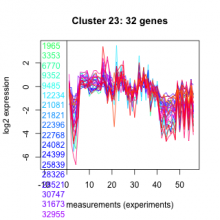 |
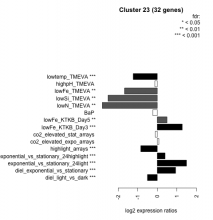 |
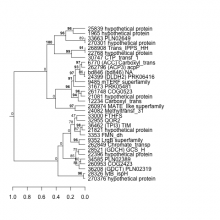 |
   |
| Normalized Mean Residue | Discovered Potential cis-Regulatory Motifs | |
|---|---|---|
|
Thaps_bicluster_0225 |
0.26 |
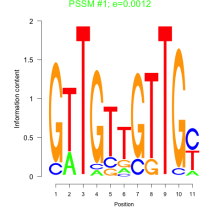 0.0012 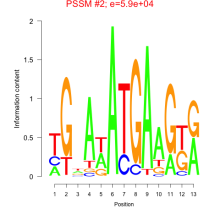 59000 |
| T. pseudonana | P. tricornutum | P. tricornutum DiatomCyc | F. cylindrus | Pseudo-nitzschia multiseries | E. huxleyi | C. reinhardtii | A. thaliana | P. sojae |
|---|---|---|---|---|---|---|---|---|
| Not available | PHATRDRAFT_9709 | PHATRDRAFT_9709 | 263929 | Not available | 444042 | Not available | Not available | Not available |
| KEGG description | KEGG Pathway |
|---|---|
| Not available | Not available |

Add comment